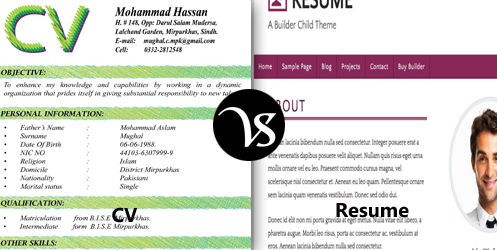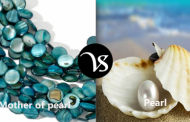 CV:
CV:
A CV (Curriculum Vitae) gives an overview of a person regarding the experience and qualification. In some countries CV is typically the first item that a potential employer encounters regarding a job seeker and is typically used to screen applicants and often followed by an interview, employment. A CV is the most flexible and convenient way to make applications.
Resume:
Resume is a document used by the persons to present their background and qualification. It can be used for variety of reasons but most often they are used to secure the new employment. The resume is usually one of the first items along with a cover letter and sometimes an application for employment which a potential employer sees regarding a job seeker and is typically used to screen applicants and often followed by an interview, employment.
Differences:
| Basis | CV | Resume |
|---|---|---|
| Definition | A brief account of a person’s education, qualifications, and previous occupations, typically sent with a job application (www.oxforddictionaries.com) |
A brief written account of personal, educational, and professional qualifications and experience, as that prepared by an applicant for a job. (www.dictionaryreference.com) |
| Objectives/Purpose | The purpose of the CV is to interest a committee in interviewing you. | The purpose of a resume is to provide a summary of your skills, abilities and accomplishments. It is a quick advertisement of who you are. It is a “snapshot” of you with the intent of capturing and emphasizing interests and secures you an interview. |
| Synonyms | Bid, biodata, appraise, application, history, qualifications | Recommence, summarize, renew, summary, recover, sketch |
| Types | The types of CV are:
|
The types of resume are:
|
| History | Leonardo di ser Piero da Vinci was an Italian Renaissance polymath. According to data available online, Leonardo da Vinci invented the first professional profile in 1482, which we call as cv. | Leonardo da Vinci is credited with the first resume though his resume takes the form of a letter written about 1481–1482 to a potential employer, Ludovico Sforza. |
| Word origin | The word cv was originated in early 20th century: Latin, literally ‘course of life.’ | The word resume was originated from late Middle English: from Old French resumer or Latin resumere, from re- ‘back’ + sumere ‘take.’ |
| Standard | CVs are kept to more rigid standards than the resume. | Resumes have more freedom when it comes to formatting. |
| Length | Two pages or a little more | One page, sometimes two pages |
| Contents | Name, contact information, education, work experience and relevant work-related skills. Includes a summary of academic background as well as teaching and research experience, publications, presentations, awards, honors, affiliations and other details | Name, contact information, education, work experience and relevant work-related skills. Focus is on work experience, listed in reverse chronological order. |
| Usage | It is used for personal use. | It is used for official use. |
| Pronunciation |
|
|
| Example in Sentence |
|
|





